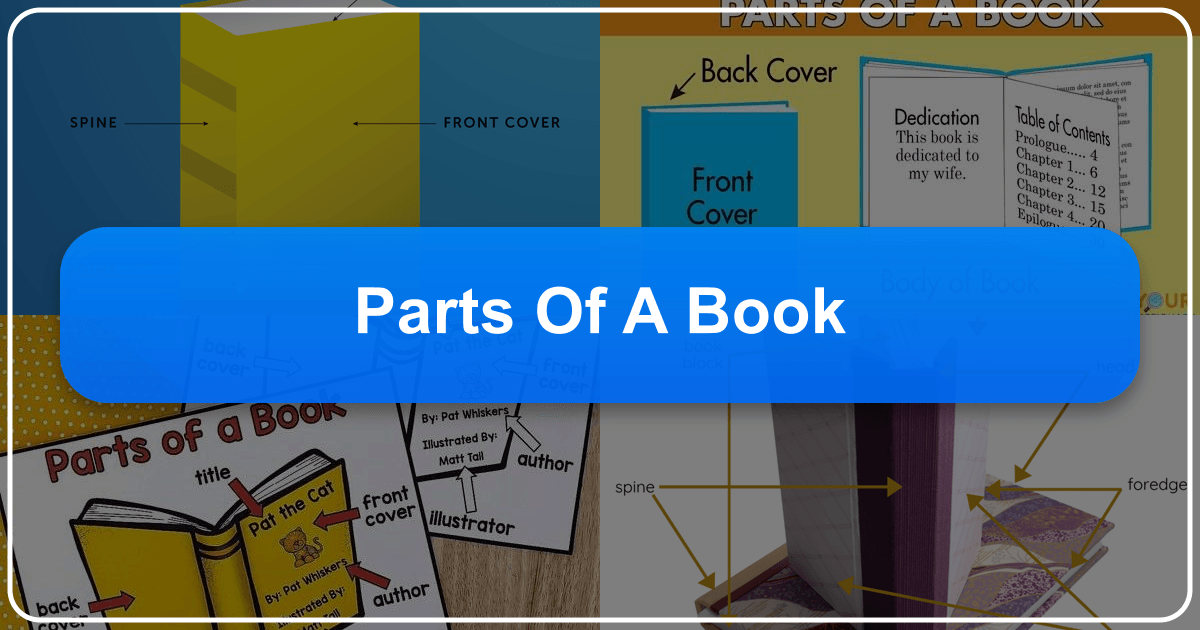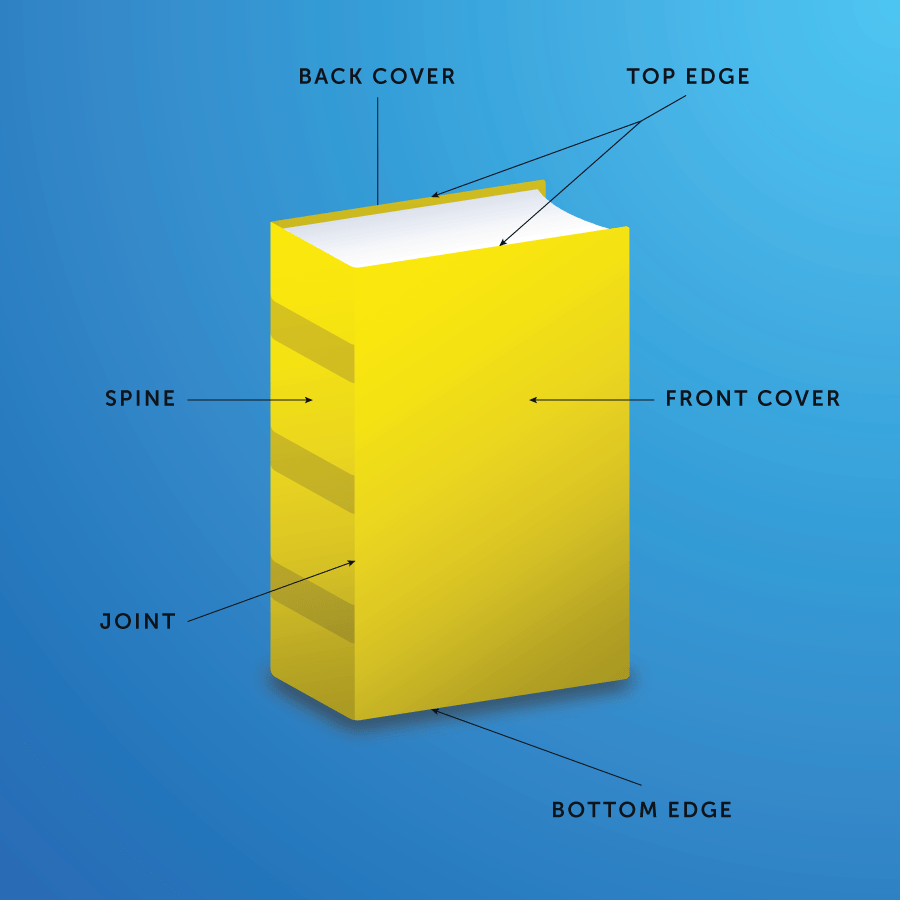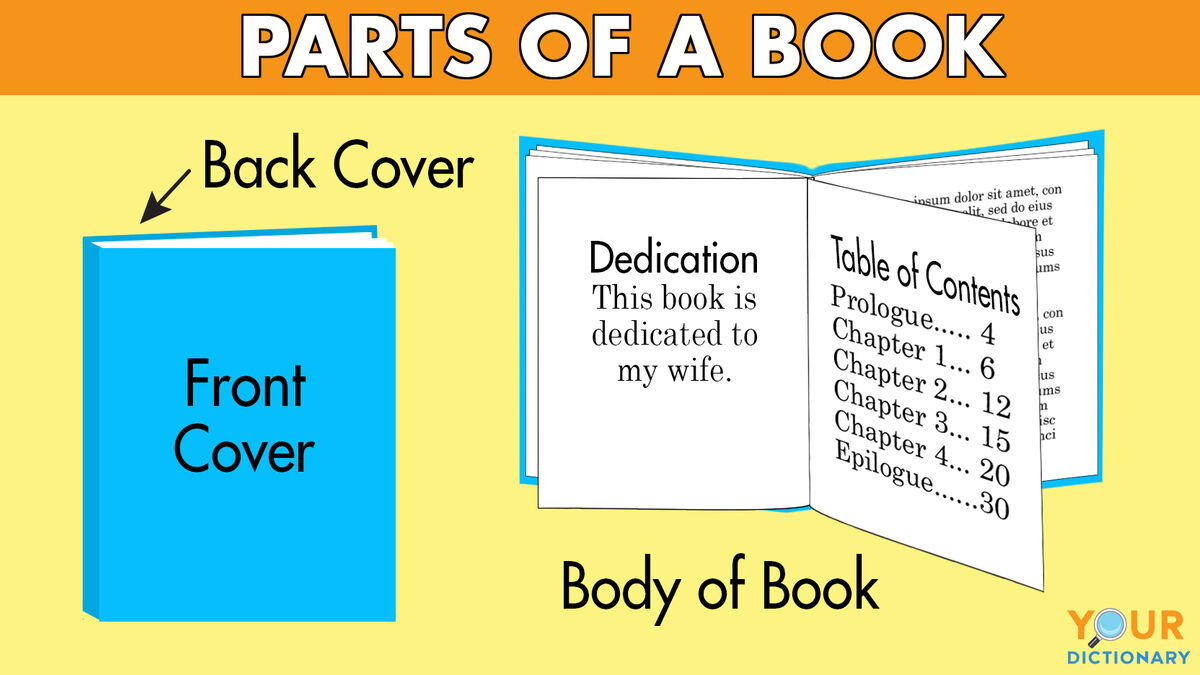Parts of a Book: A Comprehensive Guide

The humble book, a seemingly simple object, is actually a marvel of engineering and design. Understanding its constituent parts reveals a rich history of craftsmanship and a testament to the enduring power of the written word. This guide delves into the anatomy of a book, exploring both its physical components and the elements that contribute to its overall structure and impact. We will explore the various parts, from the cover to the index, and consider their significance in the context of genres, authors, reading habits, library systems, and the wider cultural landscape.

The Physical Anatomy of a Book
Several sources (Lbibinders.org) detail the physical makeup of a book, highlighting elements often overlooked in casual observation. Let’s examine these components:
The Cover and its Components
The cover, the book’s first impression, serves both aesthetic and protective functions. For hardcover books, the structure is significantly more complex than that of a paperback.

- Cover Boards: In hardcover books, these are the rigid panels forming the front and back covers, providing structural support to the text block.
- Cover Material: This can range from paperboard in paperbacks to cloth, leather, or other materials in hardcover editions, each impacting the book’s durability and aesthetic appeal.
- Dust Jacket: Many hardcover books feature an additional protective and often visually appealing outer layer—the dust jacket. This is typically printed on a high-quality paper stock and often includes additional design elements or marketing information not present on the underlying cover boards.
- Spine: The spine is the crucial binding element, holding the pages together. Its width directly correlates with the page count. In hardcover books, raised bands might be present, remnants of the traditional sewing method where cords would create visible ridges.
- Headband and Tailband: These are fabric or thread reinforcements at the top (headband) and bottom (tailband) of the spine, protecting the joint and enhancing durability.
- Endpapers: These heavy-stock papers are attached to the inside of the front and back covers, acting as a hinge and often featuring decorative designs or supplementary information.
- Flyleaves: These are the blank pages directly adjacent to the endpapers.
In paperback books, the cover is simpler, typically a single piece of heavier paper stock glued directly to the text block.
The Interior: Pages and Binding
The interior of the book, the text block, is where the content resides. Its construction reveals crucial elements of bookbinding:
- Leaf or Leaves: In bookbinding terminology, a leaf refers to a single sheet of paper, comprising two pages (recto and verso).
- Recto and Verso: These terms denote the front (recto) and back (verso) sides of a leaf.
- Text Block: The assembled stack of pages, sewn or glued together along the spine, forms the text block.
- Joint: The point where the cover connects to the spine is known as the joint. The inside of the joint forms the hinge, allowing the book to open and close smoothly.
- Binding: This is the method used to unite the pages, employing techniques like sewing (traditional and more durable), adhesive binding (faster and less expensive), or other specialized methods.
Understanding these aspects is essential for appreciating the craftsmanship involved in book production.
Beyond the Physical: The Structural Elements of a Book
Beyond the physical components, the structure of a book encompasses several key elements that guide the reader’s experience:
- Title Page: This page formally introduces the book, typically including the title, author’s name, publisher, and publication date.
- Copyright Page: This page contains the legal information protecting the book’s intellectual property, including copyright notices and ISBN numbers.
- Dedication Page: Often included, this page offers a personal acknowledgment, frequently dedicated to a person or group important to the author.
- Table of Contents: Providing a roadmap to the book’s content, this section lists chapters, sections, and page numbers, allowing readers to navigate the material efficiently.
- Preface or Foreword: These introductory sections offer context, setting the stage for the book’s main content. A preface is written by the author, while a foreword is typically contributed by another individual.
- Introduction: The introduction provides a concise overview of the book’s subject matter, scope, and intended audience.
- Chapters/Sections: The primary organizational units of the book, dividing the content into manageable segments.
- Body/Text: The main narrative or informational content of the book.
- Glossary: A valuable resource for clarifying terms and concepts, particularly useful in specialized or academic texts.
- Appendix: Supplementary materials, such as charts, tables, or additional data, are included in the appendix.
- Bibliography: A list of sources consulted during the book’s creation, acknowledging the works that informed its content.
- Index: This alphabetical listing of names, subjects, and topics allows readers to quickly locate specific information within the book.
These structural elements are crucial for enhancing the book’s readability, usability, and overall coherence.
The Book in Context: Genres, Authors, and Cultural Impact
The study of the book’s components should not be limited to its physical aspects. The book’s significance extends far beyond its physical form. It’s essential to consider the broader context in which it exists:
Genres and Classifications
Books are categorized into diverse genres, each with its unique characteristics and conventions. These genres influence the book’s content, style, structure, and even its physical design. The range of genres – from fiction and non-fiction to poetry, drama, and cookbooks – showcases the versatility and breadth of the book form.
Authors and their Influence

Authors shape the book through their writing style, thematic concerns, and narrative techniques. Studying an author’s biography, writing process, and inspirations provides valuable insight into the creation and meaning of their work. Understanding an author’s background informs the interpretation of their writing, illuminating the influences that have shaped their artistic voice.
Reading Habits and Cultural Significance
The way people interact with books – their reading habits, preferences, and cultural practices – influences the book’s impact. The evolution of reading technologies, from printed books to e-readers, further shapes how readers experience and engage with the written word. Books play a crucial role in shaping societies and cultures, acting as vehicles for knowledge transmission, storytelling, and social commentary.
Libraries and Archives: Preserving the Literary Heritage
Libraries and archives serve as vital repositories of books, safeguarding literary heritage for future generations. Public libraries provide accessibility to a vast collection of books, promoting literacy and lifelong learning. Digital libraries expand access to literary works, making them available to a wider audience. Rare book collections and archives preserve unique and historically significant books, preserving cultural treasures.
Conclusion: The Enduring Power of the Book
The book, despite the rise of digital media, continues to hold a powerful position in our cultural landscape. Understanding its various components, from the physical parts to the underlying structure and broader context, deepens appreciation for this enduring medium. The book’s anatomy reflects a complex interplay of craftsmanship, creativity, and cultural influence. By exploring these aspects, we can better understand the enduring power of the book as a vehicle for storytelling, knowledge transmission, and cultural expression.